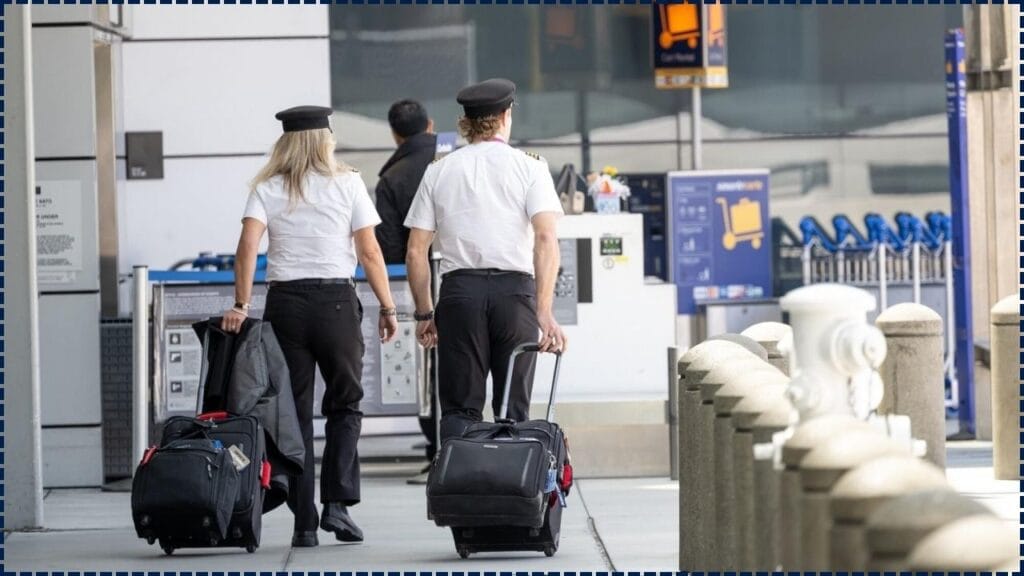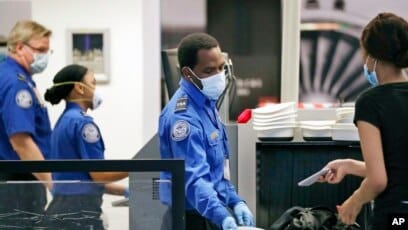In a recent and impactful development for travelers everywhere, the Transportation Security Administration (TSA) has initiated a significant crackdown, leading to the seizure of a common travel item at airports, often without prior notice. This isn’t about contraband or illicit goods; it’s about a ubiquitous accessory many of us rely on daily: the portable power bank.

Indeed, it’s that seemingly innocuous item you always casually toss into your carry-on or checked bag, expecting it to keep your devices charged on the go. However, a noticeable shift has occurred, with TSA agents increasingly confiscating these power banks—along with any spare lithium batteries—and unfortunately, they are often not returned.
This Common Travel Item Is Being Seized at Airports
| Aspect | Details |
|---|---|
| Item Affected | Portable power banks & spare lithium batteries |
| Checked Bag Ban | Must be in carry-on if ≤100 Wh; 101–160 Wh need airline approval, >160 Wh are banned |
| Label Requirement | Watt-hour rating must be clearly marked—unlabeled units get seized |
| Airline Rules | Southwest now needs visible charging; others vary |
| Safety Risks | Lithium can overheat and cause “thermal runaway” fires in flight |
| Global Standards | 100 Wh rule common in USA, EU, UK, Canada; stricter rules in some countries |
| Traveler Tips | Bring well-labeled power banks in carry-on; verify airline-specific guidelines |
| Market Insight | FAA reports showed 388% increase in lithium battery incidents between 2015–2023 |
| Official Regulations | FAA Hazardous Materials Regulations & TSA’s “What Can I Bring?” guide |
In a crucial step towards ensuring the safety of every passenger and crew member, the Transportation Security Administration (TSA) has introduced new, reinforced guidelines regarding lithium battery power banks. These measures are not arbitrary; they are meticulously designed to mitigate the potential risk of fire that these powerful devices, when improperly handled, can pose in the confined environment of an aircraft cabin. This proactive enforcement reflects a global commitment to air safety, understanding that even a small risk can have significant consequences for hundreds of lives on board.

What’s Behind the Clampdown?
A recent fire incident within an Air Busan cargo hold earlier this year sent a significant alarm rippling through the global aviation safety community. This deeply concerning event immediately triggered a critical reassessment of all lithium-powered gear being transported aboard aircraft. The very nature of these batteries—ubiquitous in our modern lives, powering everything from our phones to medical devices—poses a unique challenge in the confined space of an aircraft.
These powerful batteries are officially classified by the FAA as “Class 9 – Miscellaneous Hazardous Materials,” a designation that underscores their potential risks. The danger is particularly pronounced in cargo holds: once stowed, they are out of sight, meaning a thermal event or fire could quickly escalate and be out of control before anyone even notices.
Why You Should Be Alert
Real traveler losses
- A Delta Airlines passenger lost a pristine Anker 20,000 mAh unit at security—no mention once—cash value: $50.
- Another flew internationally thinking their rock-solid Tesla-branded charger was fine. Nope—it got seized overseas.
Fire risk is real
A 388% increase in lithium battery incidents over eight years means this isn’t theoretical. Checked baggage can go up in smoke before pilots even know it’s bad.
Inconsistent enforcement
One week it clears. The next, TSA is seizing it. No explanation—just confiscation.
Stuck abroad
Foreign airports may enforce stricter rules. In Thailand, devices even under 100 Wh were seized—no exceptions.
Related Links
Newark Airport’s Air Traffic Control Issues Highlight National Infrastructure Challenges
How Much Cash Should You Really Keep in Your Wallet? Financial Gurus Share Surprising Advice
Your This Common Travel Item Is Being Seized at Airports Guide to Power Bank Travel
- Check Your Rating: Look for watt-hour info. ≤100 Wh is good; anything above needs airline permission—often denied.
- Stick With Labels: Labels matter. Unlabeled banks—even small ones—get confiscated.
- Keep It With You: Carry-on only. Checked bags aren’t allowed.
- Visibility Rules: On Southwest, you must hold chargers while using them. Other airlines are adopting similar guidelines.
- Inspect for Damage: Batteries past their prime? Throw them out. TSA will too.
- International Rules: Always check destination’s battery regulations. They might be stricter than U.S. policy.
Pack Checklist for Travel:
- Label ≤100 Wh
- Store in carry-on
- Visible during use
- Undamaged
- Airline policy confirmed
Non-Cash Alternatives to Power Banks
- Multiport wall chargers—affordable backup in hotels or airport lounges
- Solar chargers—good on the go
- Battery phone cases—no loose lithium battery, TSA fine with them
- Charging kiosks—airport and café spots are handy and cheap
Final Takeaway
The Transportation Security Administration’s (TSA) regulations regarding portable power banks aren’t designed to complicate your journey or ruin your day; at their core, they are about keeping planes safe for everyone on board. In our increasingly connected world, these handy gadgets have become indispensable for charging our phones, tablets, and other devices.
However, the powerful lithium-ion batteries within them, if improperly handled, pose a potential fire risk in the pressurized environment of an aircraft. These rules are a proactive measure to prevent serious incidents, safeguarding the lives of passengers, flight crews, and the aircraft itself.
FAQs
Q: Can I check my phone or laptop?
Yes—internal batteries are allowed in checked luggage.
Q: What’s the difference between Wh and mAh?
Wh = (mAh × Voltage ÷ 1000). Airlines care about Wh—not advertised mAh.
Q: Can I bring more than one power bank?
Under 100 Wh, yes. In later Wh classes, no. Always verify with your airline.
Q: What if mine gets seized?
Once gone, it’s gone. TSA doesn’t refund. Avoid risk by meeting FAA rules.
Q: Are airline rules all the same?
No. Some carry-on require visible charging, others limit total carry-on batteries.








